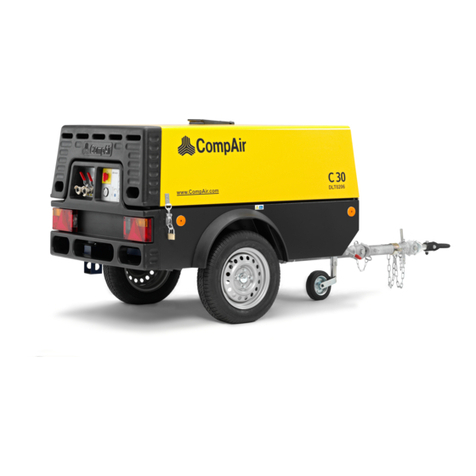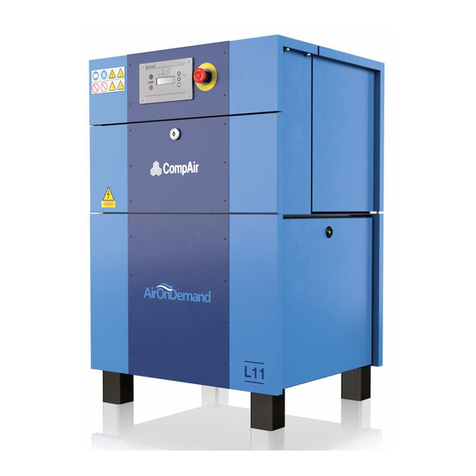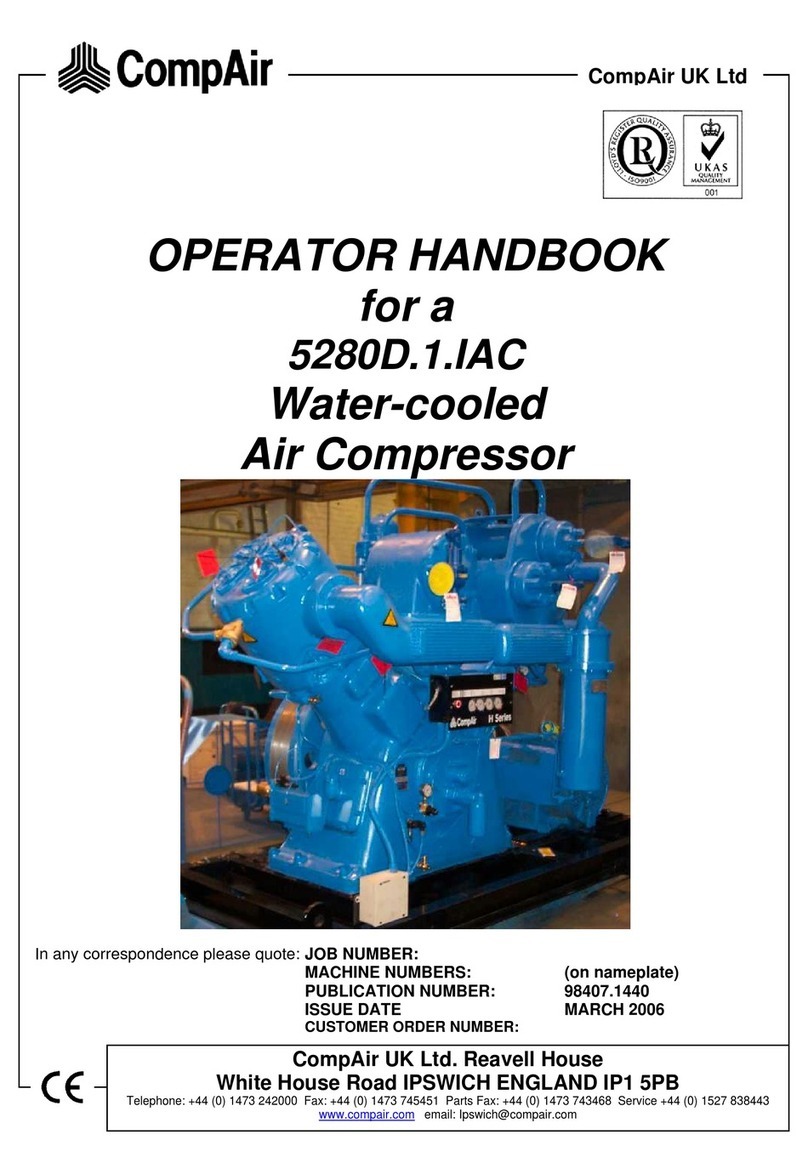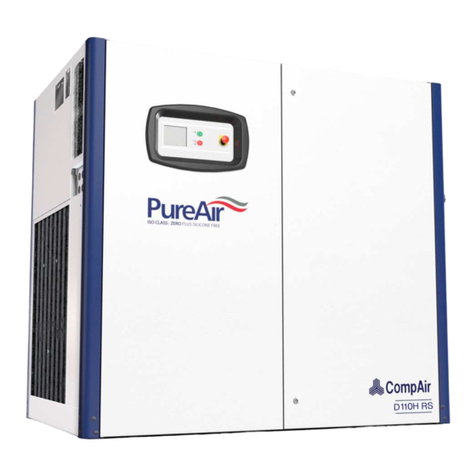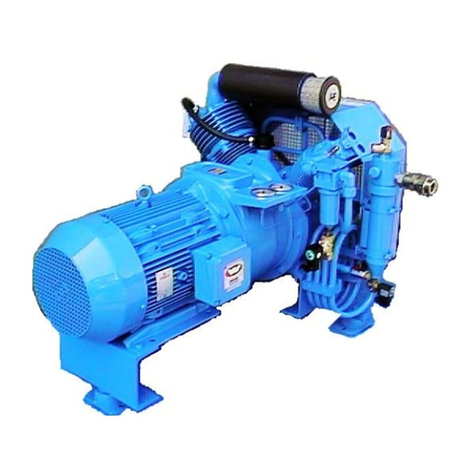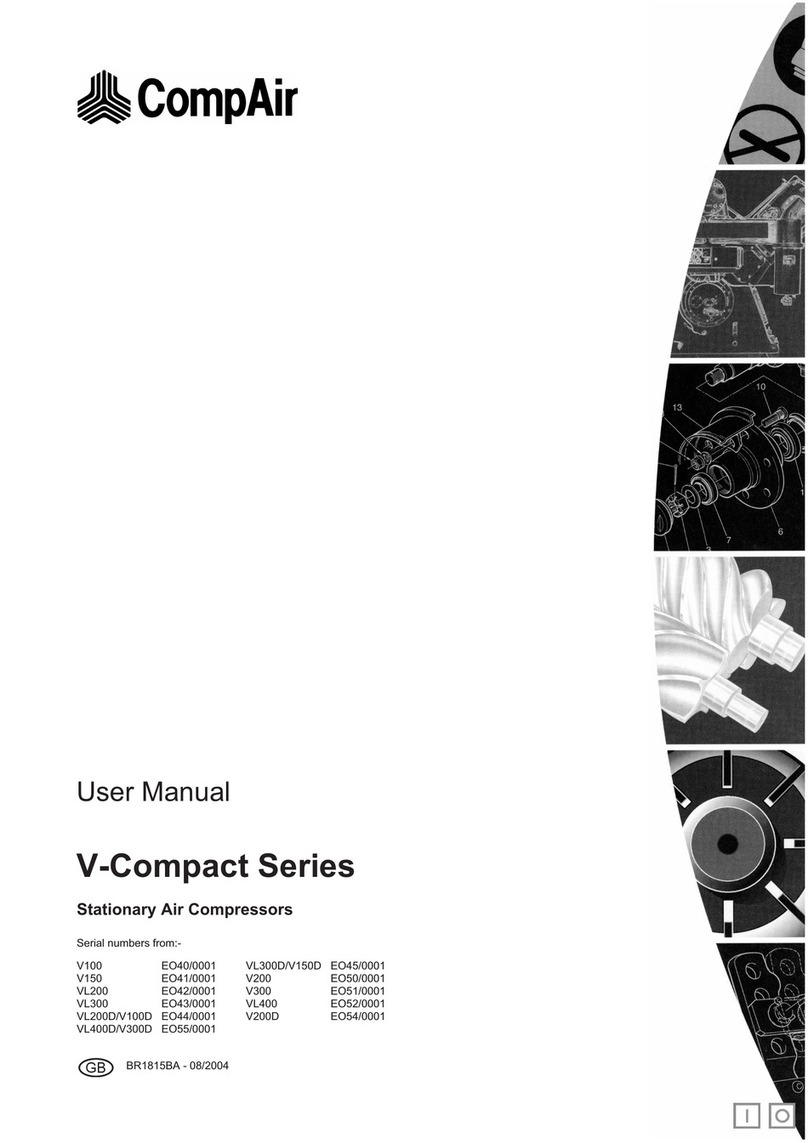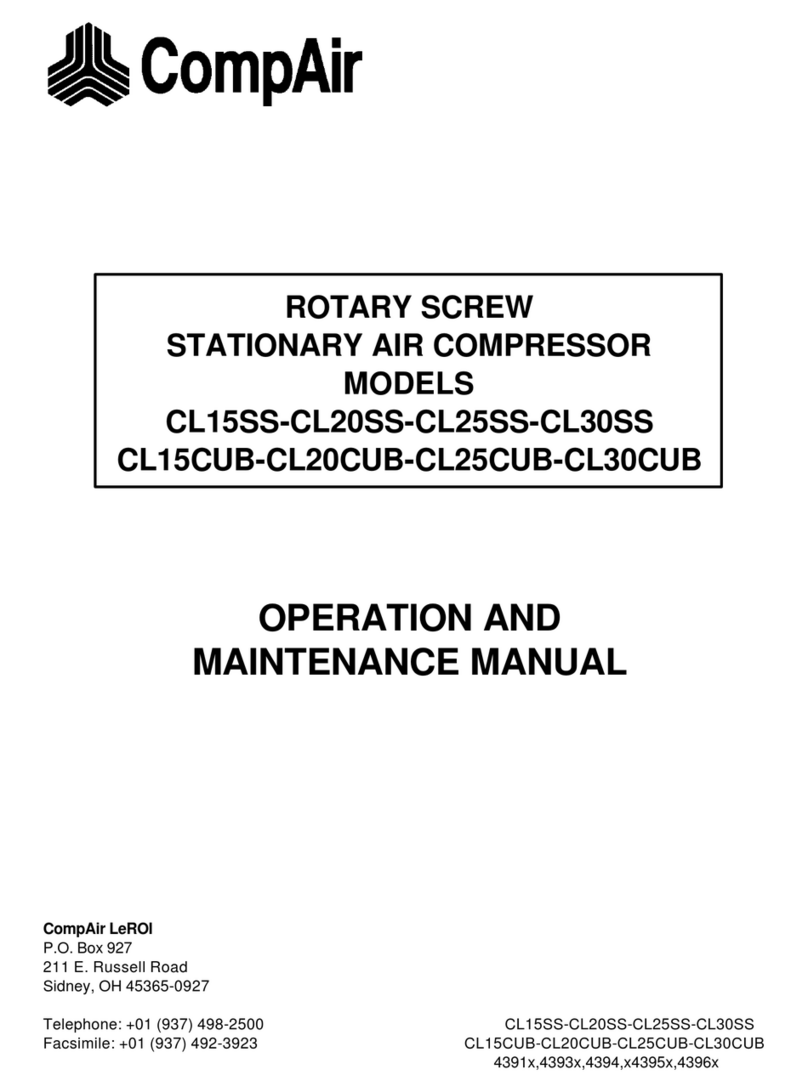1. Foreword
3
1Foreword
1.1 Notes on the compressor
CompAir screw compressors are the result of many
years of research and development. These
prerequisites combined with high quality standards
guarantee the manufacture of screw compressors
providing a long service life, high reliability and cost-
effective operation. It stands to reason that all
requirements concerning environmental protection are
met.
1.2 Intended use
The machine/unit has been constructed in accordance
with state-of-the-art technology and the recognized
safety regulations. Nevertheless, its use may constitute
a risk to life and limb of the user or third persons or
cause damage to the machine or to other material
property, if
•it is not used as intended,
•it is operated by unqualified personnel,
•it is improperly modified or changed,
•the safety regulations are not observed.
Therefore, any person entrusted with the operation,
maintenance or repair of the machine must read and
follow the safety regulations. If required, this has to be
acknowledged by signature.
In addition,
•relevant accident prevention regulations,
•generally recognized safety regulations and
•national regulations
have to be observed.
The machine/unit must only be used in technically
perfect condition and in accordance with its intended
use and the instructions set out in the operating
manual, and only by safety-conscious persons who are
fully aware of the risks involved in operating the
machine/unit! Any functional defects, especially those
affecting safety, have to be rectified immediately (or
rectified by others)!
The machine/unit is designed exclusively for the
generation of compressed air to power air-driven
devices. Using the machine/unit for purposes other than
those mentioned above is considered contrary to its
intended use. The manufacturer/supplier cannot be held
responsible for damage resulting from such use. The
risk of such misuse lies solely with the user.
Operating the machine within the limits of its intended
use also involves observing the instructions set out in
the operating manual and complying with the inspection
and maintenance directives.
1.3 Maintenance
Carefully performed maintenance is imperative, this
ensures that your screw compressor can meet all the
requirements placed upon it. It is therefore imperative to
adhere to the specified maintenance intervals and to
carry out the maintenance work with particular care,
especially when the unit is utilized under harsh
operating conditions.
Servicing
Please contact your authorized CompAir dealer in the
case of malfunctions or when spare parts are required.
In the case of damage, our fully trained personnel will
ensure that a quick and proper repair is carried out
using genuine CompAir spare parts. Genuine CompAir
spare parts are manufactured utilizing state-of-the-art
technology, thus guaranteeing the further reliable
operation of the unit.
In case of queries
Please enter the data on the nameplate of your
compressor into the nameplate shown in (Fig. 1 on
page 2). In the case of queries or spare parts orders,
please refer to the compressor type indicated on the
nameplate, the identification no. and the year of
construction. With this information at hand it can be
guaranteed that you will receive the right information or
required spare parts.
1.4 Notes
General
These operating instructions are intended to familiarize
the user with the machine/unit and its intended use. The
instructions contain important notes on how to operate
the compressor safely, properly and cost-effectively.
Observing these instructions helps to avoid risks, to
reduce repair costs and downtimes and to increase the
reliability and service life of the machine/unit.
The operating instructions have to be supplemented by
the respective national rules and regulations regarding
the prevention of accidents and environmental
protection. They must always be available at the
location of the machine/unit. The operating instructions
must be read and followed by any person carrying out
work in connection with the machine/unit, e.g.
operation, including setting up, trouble-shooting in the
operation cycles, disposal of production waste, care,
service, and disposal of waste fuels and consumables,
upkeep (maintenance, inspection, repair), transport.

